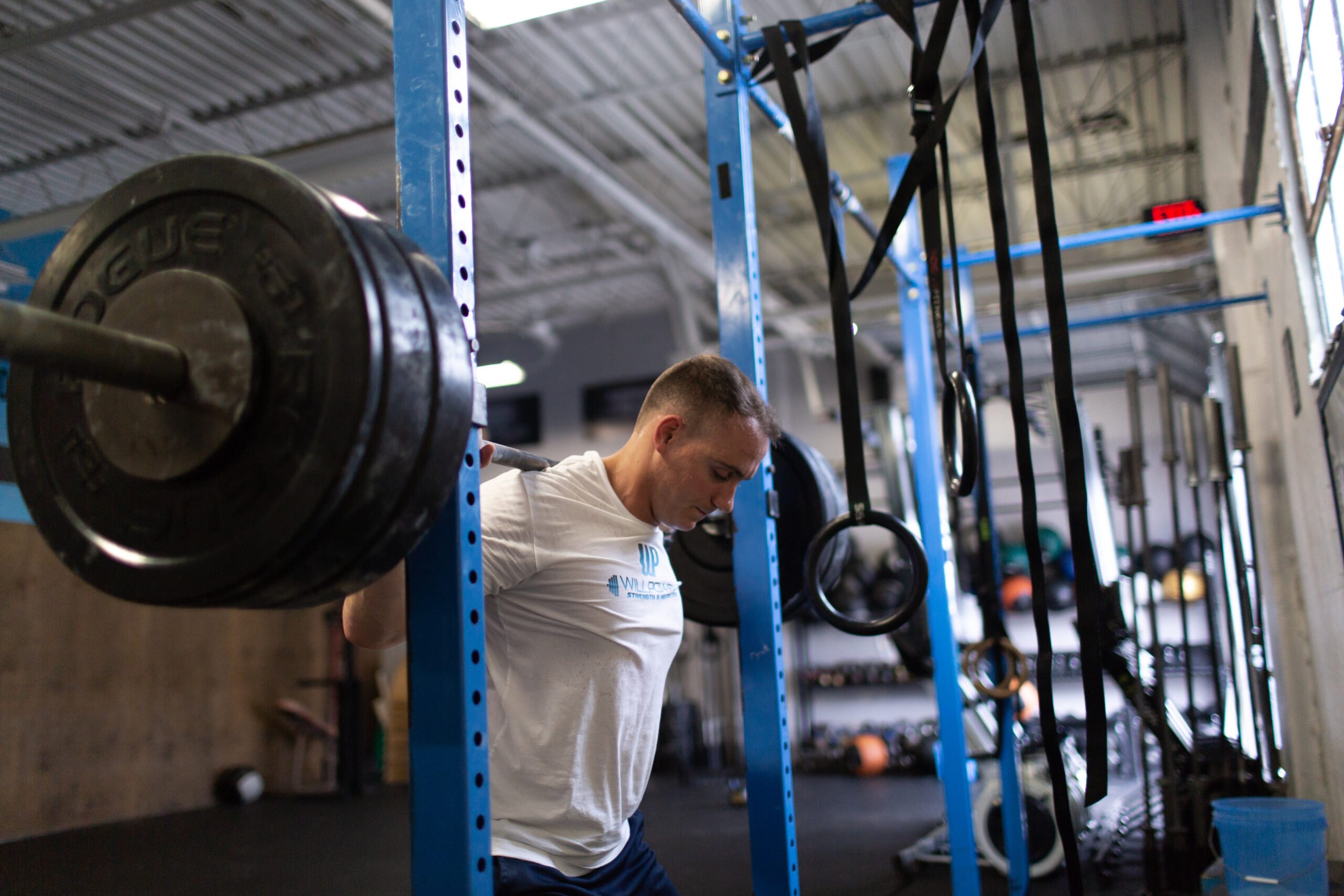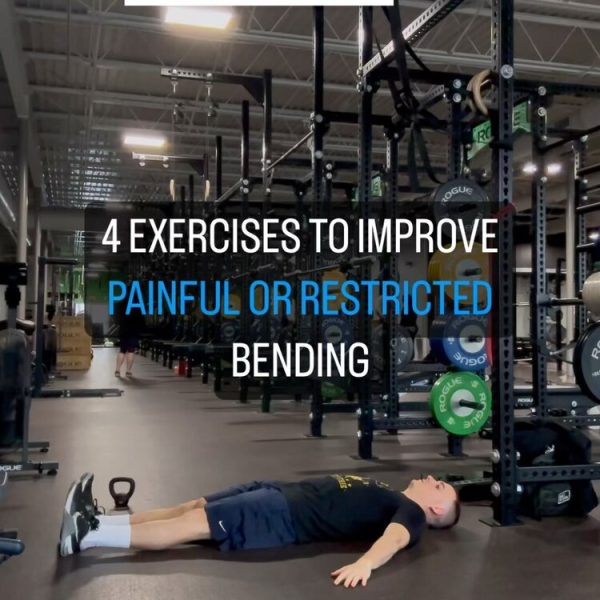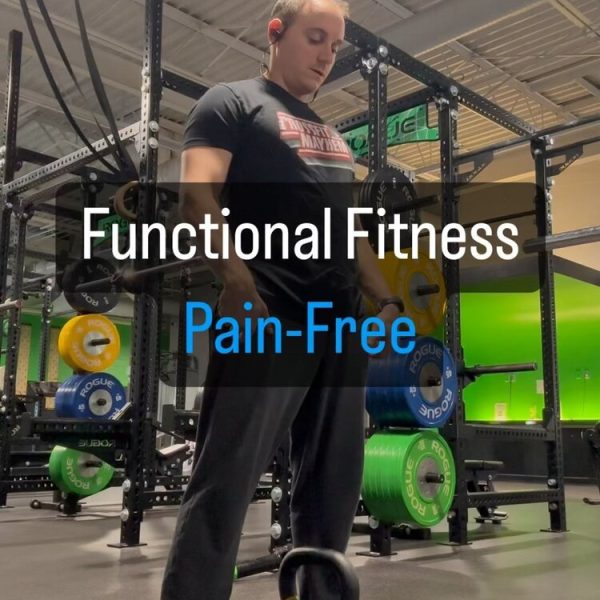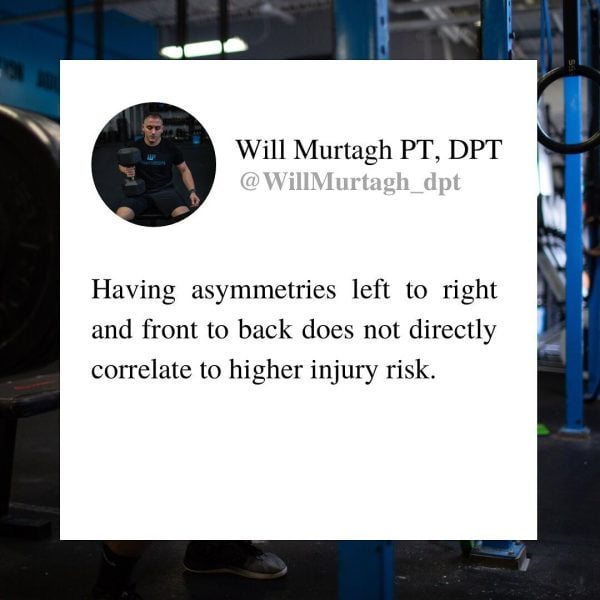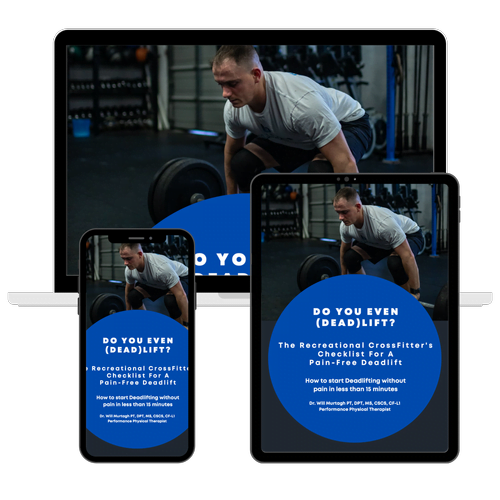Dr. Will Murtagh is a performance physical therapist and writer who helps Fitness Athletes elevate their fitness and train pain-free.
As an affiliate partner of various brands and sponsored content, WillPower Strength & Nutrition may earn commission on qualifying purchases at no additional cost to you.
If you are a CrossFit looking to improve the fitness as much as possible, you may be wondering how to improve your squat depth. Rightfully so as the squat is one of the main movements in CrossFit and is taught as one of the nine fundamental movement patterns in the training methodology.
Learning how to squat with full depth and proper form is imperative to developing your ability in CrossFit as many of the movements stem from the movement.
However, the squat can be a challenging movement to conquer if you have mobility issues and struggle to move through the entire range of motion.
A full and complete squat with good form and full range of motion begins with:
- The hip at full extension.
- Initiated by sending the hips back and down.
- Weight in the mid-foot.
- Descending until enough hip flexion has occurred until the hip crease is below the knee joint.
- Standing with the shoulders and hips rising together.
- Maintaining the curve in the lower back as you stand back to full hip extension.
Achieving these points of performance will ultimately come down to how well you have developed the three components of movement.
These include Flexibility, Mobility and Strength/Stability.
The rest of this article will dive into these three components and then provide exercise examples for each one to help you improve your lower body mobility and optimize your squat mobility.
FLEXIBILITY
Lower body flexibility is the first step to developing your squat pattern.
Flexibility is defined as the ability of your muscles and joints to move through full ranges of motion passively.
Increasing flexibility is what most people are looking to accomplish when they are static stretching.
With regards to improving the squat pattern, flexibility issues usually manifest in the hip flexors, calf muscles and hamstrings.
All three of which cross the joints required for adequate squat mobility and can alter your ability to squat
Flexibility issues are usually a response to weakness in the body that the nervous system detects as creating vulnerability in a specific joint.
For example, if you lack stability in the lower back, the hip flexors with become tight as a way to artificially stabilize the midsection.
In one aspect this is beneficial, it is the body’s defense mechanism against injury. But, with regards to optimal movement it can negatively affect your squat mobility.
Lower body flexibility issues are commonly addressed with static stretching, but this does not take the nervous system into account.
Although stretching may provide a short term increase in the muscles ability to lengthen, it does not address the stability issues that the tight muscles are masking.
The better approach is to use strengthening exercises to improve stability of the ankle joint, knee joint and hip joint so that the muscles around each will “relax” and decrease their resistance to stretch.
JOINT MOBILITY
Lower body mobility differs from lower body flexibility in that mobility refers the body’s ability to move through full ranges of motion actively or under its own power.
Joint mobility requires adequate control and is also heavily influenced by the nervous systems detection of safety through a full range of motion.
Restrictions in joint motion is typically related to decreases in joint space by a tight joint capsule. The joint capsule is a fibrous and elastic structure that surrounds each synovial joint.
A synovial joint is essentially each major joint of the body that produces synovial fluid which lubricates the joint, has a synovial membrane and contains articular cartilage.
When this joint capsule is restricted there is decreased joint space for the joint to operate and thus decreases in range of motion occur.
For example, if the capsule inside the hip joint becomes restricted, the area for the Femoral head to move decreases in the hip socket and the ability for the femur to create hip flexion, extension and hip rotation is reduced.
The irony around lower body mobility is that the joint must first possess adequate flexibility and passive range in order to have full active joint mobility.
Ideally, passive range of motion will be equal to active range of motion but this is rarely the case.
But, you can use various mobility drills, like the ones below to expand your active motion as much as possible to an ultimately achieve a deeper squat.
The deep squat position requires adequate ankle mobility, hip mobility knee flexion mobility and great stability around the lower back.
Full range of motion for these joints include the following:
Ankle Dorsiflexion: 20 degrees
Knee Flexion: 140 degrees
Hip Flexion: 120 degrees
When you don’t have these ranges of motion your squat technique will be negatively affected as the body begins to steal motion from the joints above an below it.
This is called the “Joint By Joint Approach” which outlines the joints of the body as alternating between mobile and stable joints.
As it pertains to the squat, the lower back is classified as stable, the hip joint is mobile, the knee joint is stable and the ankle joint is mobile.
You can see this depicted in the picture below:
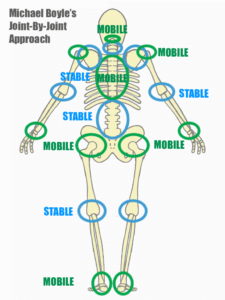
Although stable joints need to have the ability to move through full range of motion as well, during functional movement like squat variations, their primary role is to remain stable as the mobile joints access greater range of motion.
You can learn more about this concept in my recent article: Preventing Lower Back Injuries When Exercising: Key Techniques for Stability and Pain Relief
Deficits in lower body mobility can be addressed using joint mobilizations to improve the extensibility of the hip capsule but also mobility drills to strengthen the joints and improve control.
STRENGTH
Developing adequate strength is a forgotten aspect of improving lower body mobility. Most people will go for static stretching if they notice that their squat mobility is not where they want it to be.
But, as I have mentioned above, improving flexibility and joint mobility is only a part of the puzzle. Developing strength and stability through greater ranges of motion is the crucial element to improving your squat depth.
Developing strength in each of the six movement patterns can be a slow process and requires a step wise process that begins with movements of low complexity and progresses to higher complexity.
In my 1:1 Pain-Free Performance Program I begin my clients with Bodyweight Squats, followed by Goblet Squats, Front Squats and then finally Back Squats.
If they demonstrate that they already have the ability to perform lower complexity squat variations with full range of motion then we move on to the next variation until they reach a Back Squat.
At which point any of the squat variations can be used to improve performance.
The reason for this progression is that the squat pattern requires motor control to be built in addition to joint mobility.
Motor control is the ability for the brain and nervous system to coordinate the muscles and joints of the body to achieve proper squat depth.
Which is then followed by muscle endurance and then maximal contractions you can learn more about this progression in a recent article of mine: The Best Program For Building Strength In CrossFit
Beginning with Bodyweight squats allows for motor control to be built and then challenged with subsequent squat variations that allow for increased loading but require more and more ranges of motion.
The reason why you may not be able to achieve these values very individualized and can be a result of any or all of the three components of lower body mobility.
The best option is to get assessed like all of my 1:1 Pain-Free Performance Program clients go through as a part of their onboarding.
But, you can craft your own mobility routine using the exercises below to help take steps to address tight muscles and improve your squat mobility as best as possible.
Flexibility Exercises To Improve Squat Depth
Couch Stretch
The Couch stretch is a great way to decrease the tightness in your tight hip flexors. Simply find a wall or a couch and position yourself in a lunge position. You can begin with less knee flexion of the leg you’re stretching and as you improve push into a greater range of motion.
Pigeon Pose
The Pigeon Pose focus on increasing the extensibility of the Glute muscles and the Piriformis. You can regress this exercise by using an elevated surface such as a table or a yoga block under the leg you are stretching. You can begin with a tall torso and an elevated knee and progress to a down torso and flat knee.
Ankle Dorsiflexion Stretch
The Ankle Dorsiflexion Stretch is a simple way to stretch the muscles of the lower leg including the Gastrocnemius and Soleus. All you need is a wall and a timer or an incline board for an even better stretch.
Joint Mobility Exercises To Improve Squat Depth
Banded Lateral Hip Mobilization
The Banded Lateral Hip Mobilization drill is a great way to increase the joint space of the hip. The lateral distraction allows for the entire capsule to be stretched in one exercise. All you need is a sturdy exercise band.
Seated Tibial CARS
Seated Tibial CARS are a great way to improve the joint space in the knee and move the passive motion you gained with flexibility training as close to active motion as possible.
Seated ANKLE CARS
Seated Ankle CARS are a great way to improve your ankle mobility and move the passive motion you gained with flexibility training as close to active motion as possible.
Joint Strength/Stability Exercises To Improve Squat Depth
Pause Goblet Squat
Pause Goblet Squats allow you to strengthen the positions of the deep squat. As you develop strength at this range of motion the brain will allow the hip joint to open further and further allowing for a deeper squat. You can use a kettlebell or dumbbell for these.
Quadruped Hip CARS
Quadruped Hip CARS are a great way to improve the joint space in the Hip and move the passive motion you gained with flexibility training as close to active motion as possible.
Pallof Press In Deep Squat
Pallof Presses in the deep squat position allow you to reinforce lumbar stability in the bottom of the squat position. Improving stability in the lower back in the deep squat will allow the brain to feel safe in this bottom position and allow the hips to descend down further and further. To perform these you can utilize a strength bands or you can use a cable column machine.
The Wrap-Up On Improving Back Squat Mobility!
Mastering Flexibility, Mobility, and Strength/Stability is key for improving squat mobility in CrossFit. Strengthen to relax muscles, address joint mobility through drills, and prioritize strength development for optimal performance. Each component is crucial for achieving a deeper and effective squat.
In my 1:1 Pain-Free Performance Program, I’ve successfully guided countless CrossFitters to overcome mobility challenges and reach new fitness heights without enduring nagging aches and pains. Over the last decade, I’ve assisted numerous individuals in achieving their ideal physique while preserving strength and muscle. Don’t let mobility concerns hold you back—take the next step to elevate your CrossFit journey.
If you’re looking to enhance your squat and overall performance, I invite you to book a free consultation HERE. Let’s chat about how I can help you train pain-free and reach your highest fitness level.

